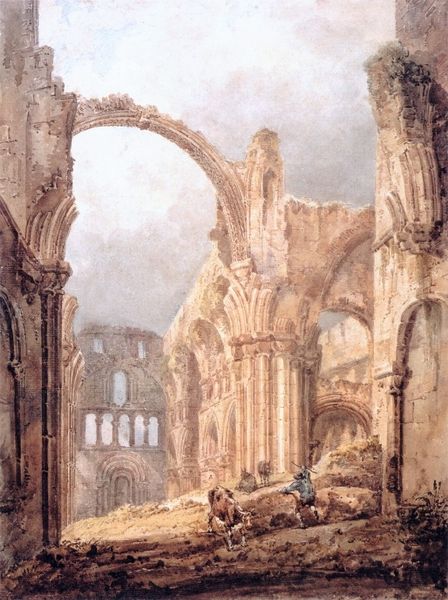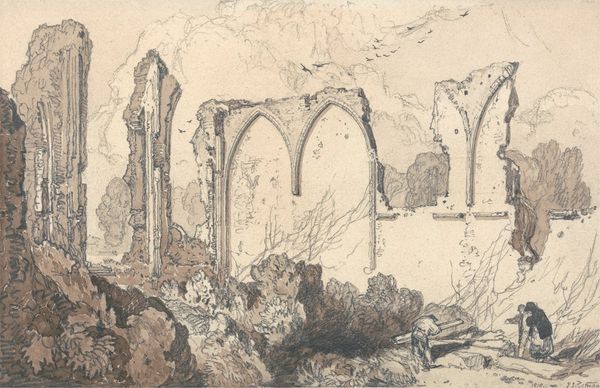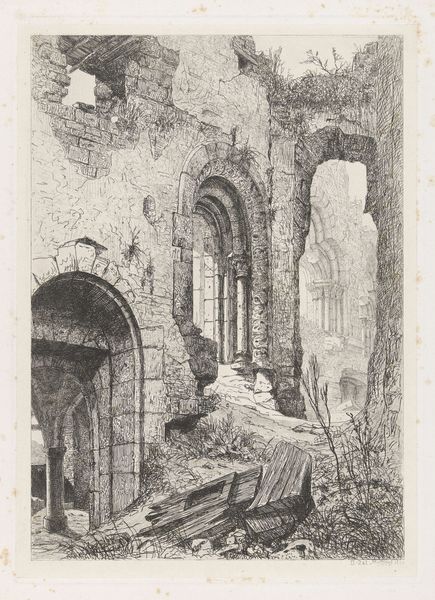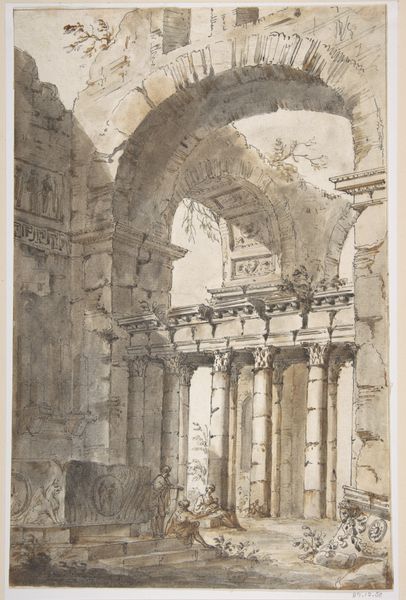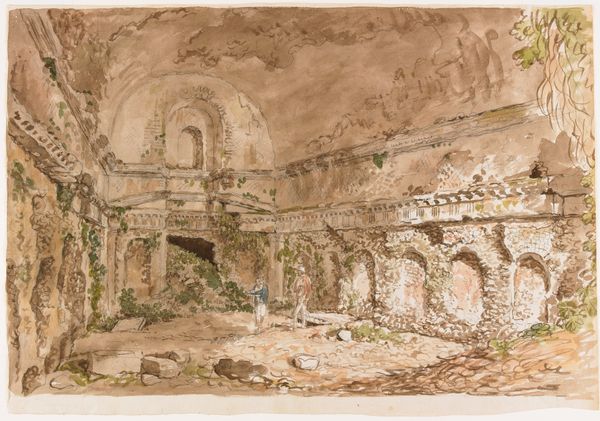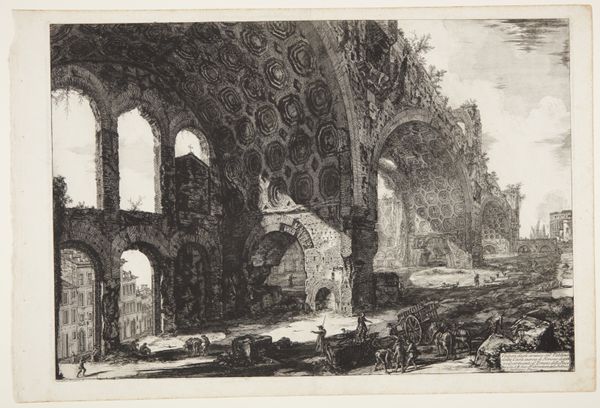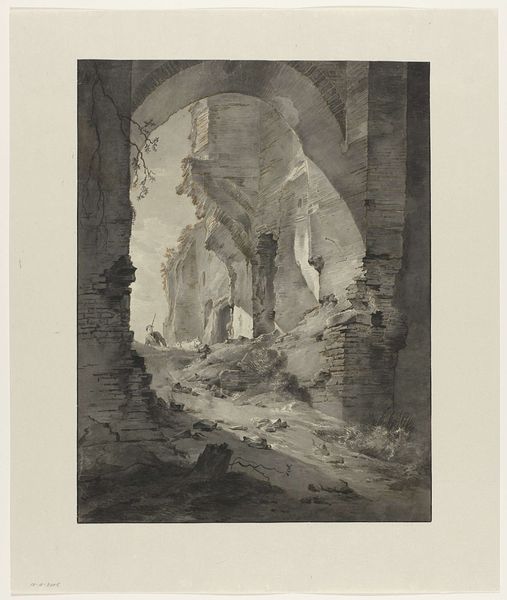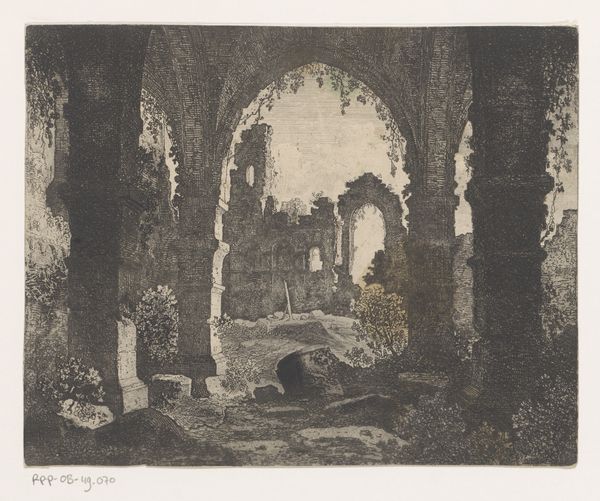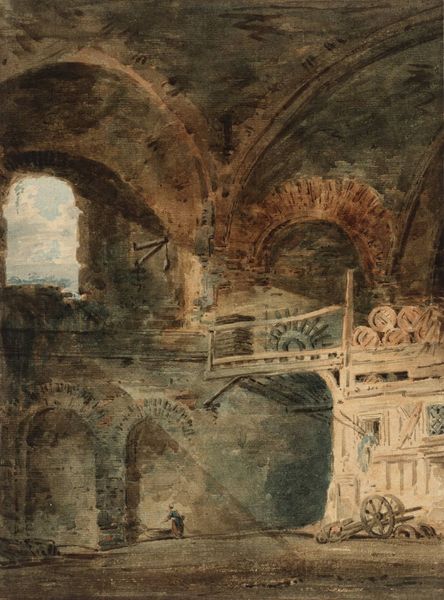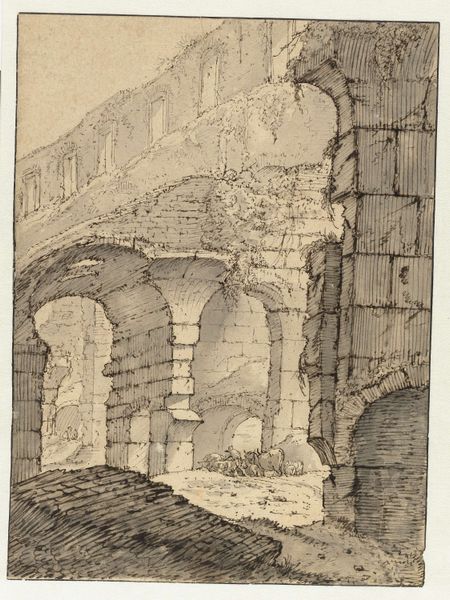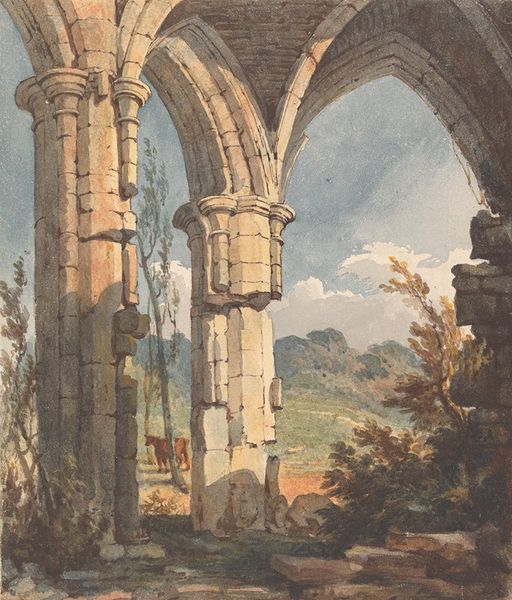
Dimensions: support: 438 x 330 mm
Copyright: CC-BY-NC-ND 4.0 DEED, Photo: Tate
Editor: This watercolor by John Sell Cotman captures the ruins of Llanthony Abbey. The arches create such a strong, almost haunting, sense of depth. What do you see in this piece? Curator: I see a commentary on power structures and the transience of institutions. Cotman, working during a period of immense social upheaval, seems to be depicting not just the ruin of a building, but the crumbling of societal norms. Editor: Oh, that’s interesting! The crumbling of societal norms. Curator: Yes, ask yourself, what does it mean to depict a religious structure in decay? Is it simply aesthetic, or does it speak to larger shifts in faith, politics, and social order? Editor: I never considered it from that point of view. Thanks for the new perspective. Curator: Of course. Always think about the context surrounding the creation of art.
Comments
Join the conversation
Join millions of artists and users on Artera today and experience the ultimate creative platform.
tate 7 months ago
⋮
Cotman was slightly younger than Girtin and Turner, but like them he created dramatic compositions showing buildings important to the history of Britain. In previous generations medieval architecture was considered as simply barbaric, apparently lacking the balance and simplicity of classical styles. Images like this, which cast ruins as the source of Sublime awe, encouraged the appreciation of medieval buildings for their emotional and historic associations. Gallery label, August 2004
